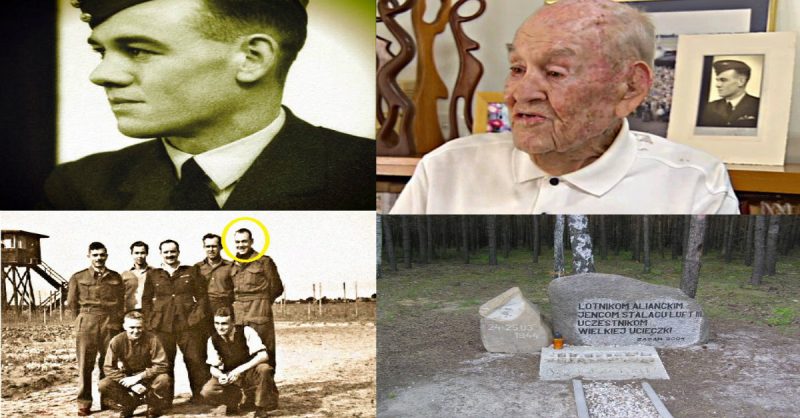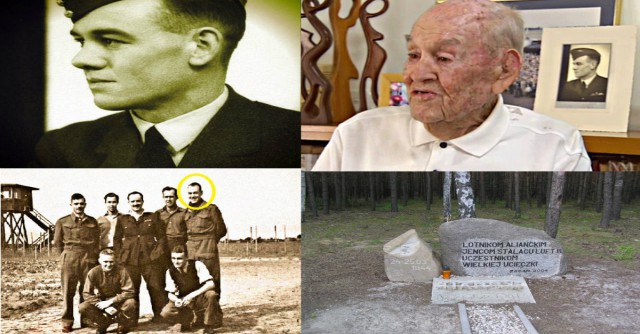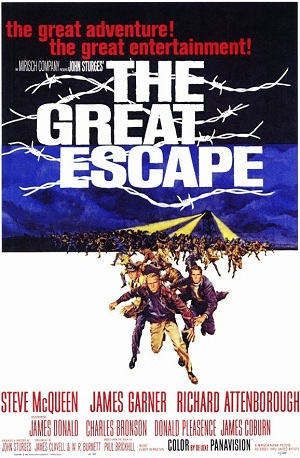WWII veteran and “Great Escape” survivor Paul Royle – one of the only two living “Great Escape” survivors – passed away Friday, August 28. He was 101. His death leaves WWII veteran Dick Churchill the only living “Great Escape” survivor.
According to his son Gordon, the death of the “Great Escape” survivor followed after he underwent a surgery for his fractured hip which he sustained from a fall in his nursing home some three weeks earlier.
Gordon added that the now only living “Great Escape” survivor, Dick Churchill, was “sad but stoic” when he called him personally to inform him about his father’s death.
Knowing “Great Escape” Survivor Paul Royle
Paul Royle was born in Perth, Australia on January 17, 1914. After leaving school at the young age of 14, he went with his father – who was an engineer – to Australia’s remote Outback to survey airfields. Eventually, the “Great Escape” survivor decided to pursue a career in mine surveying and enrolled in the Western Australia School of Mines in 1936.
Later on, the Royal Air Force recruited him and in 1939, Paul Royle relocated to England to undergo training as a pilot officer and became a Flight Lieutenant.
The Paul Royle was flying on one of his mission trips when he was shot down over France on May 17, 1940 and was captured. He actually was one of the first prisoners of the Stalag Luft I camp though in 1942, all of them were transferred to the Stalag Luft III which, according to their German captors, was escape-proof. Paul Royle was also one of the early members of the camp’s escape organization.
![Paul Royle [encircled] with fellow POWs during the time he spent in Stalag Luft I.](https://www.warhistoryonline.com/wp-content/uploads/sites/64/2015/08/Great-Escape-Survivor-IV.jpg)
The Paul Royle was the 54th man to leave through tunnel “Harry”. He, then, teamed up with another flight lieutenant – Edgar Humphries – and both planned to walk towards Switzerland. However, after two days hiding by daylight and walking at nightfall in the woods in bitter cold, the two were recaptured. They were handed to the Gestapo who sent Royle back to Stalag Luft III where he spent two weeks in solitary confinement. Unfortunately, his companion, Humphries, was among the 50 men who were executed as per order of the notorious German Fuehrer.
Of the 76 airmen who did the daring escape from Stalag Luft III that night in 1944, only three – one Dutch and two Norwegians – evaded capture successfully and were able to go home.
As for Paul Royle, his two nights spent in the woods after his escape was his only taste of freedom throughout WWII. He was eventually released from captivity on May 2, 1945 after the prison camp he was in – the Marlag und Milag Nord – got liberated by British troops.
After the war, Royle worked in engineering and mining until his retirement in 1980.
The “Great Escape” Survivor and The Great Escape Movie
Though many lauded the 1963 American war film The Great Escape, Paul Royle loathed it.
Commenting about his dislike for the movie, he said in an interview with the Australian Broadcasting Corp. that it only glamorized the tediousness that was their reality while being POWs in Stalag Luft III. The film was far from the reality steeped with “darkness, cold and terror”.
“. . . there were no motorbikes … and the Americans weren’t there.” he even went on.
On the other hand, his son, Gordon, had no idea his father was part of the daring “Great Escape” until he read his name in a book written about it in the mid-1970s.
He said that his father kept silent about his wartime experiences though he did found news clipping related to the well-known breakout along with obituaries of fellow “Great Escape” survivors included in his father’s belongings.
The “Great Escape” survivors had a sort of club formed after WWII ended and with their newsletter, the Sagan Select Subway Society, they kept in touch. The said newsletter also listed the death of each member. In the club’s latest publication, found among Paul Royle’s belongings, Gordon saw that he and Dick Churchill were the only remaining survivors.
Goodbye and our salute, WWII veteran and Great Escape survivor Paul Royle!
https://youtube.com/watch?v=gTKLF6uZ2Dw


